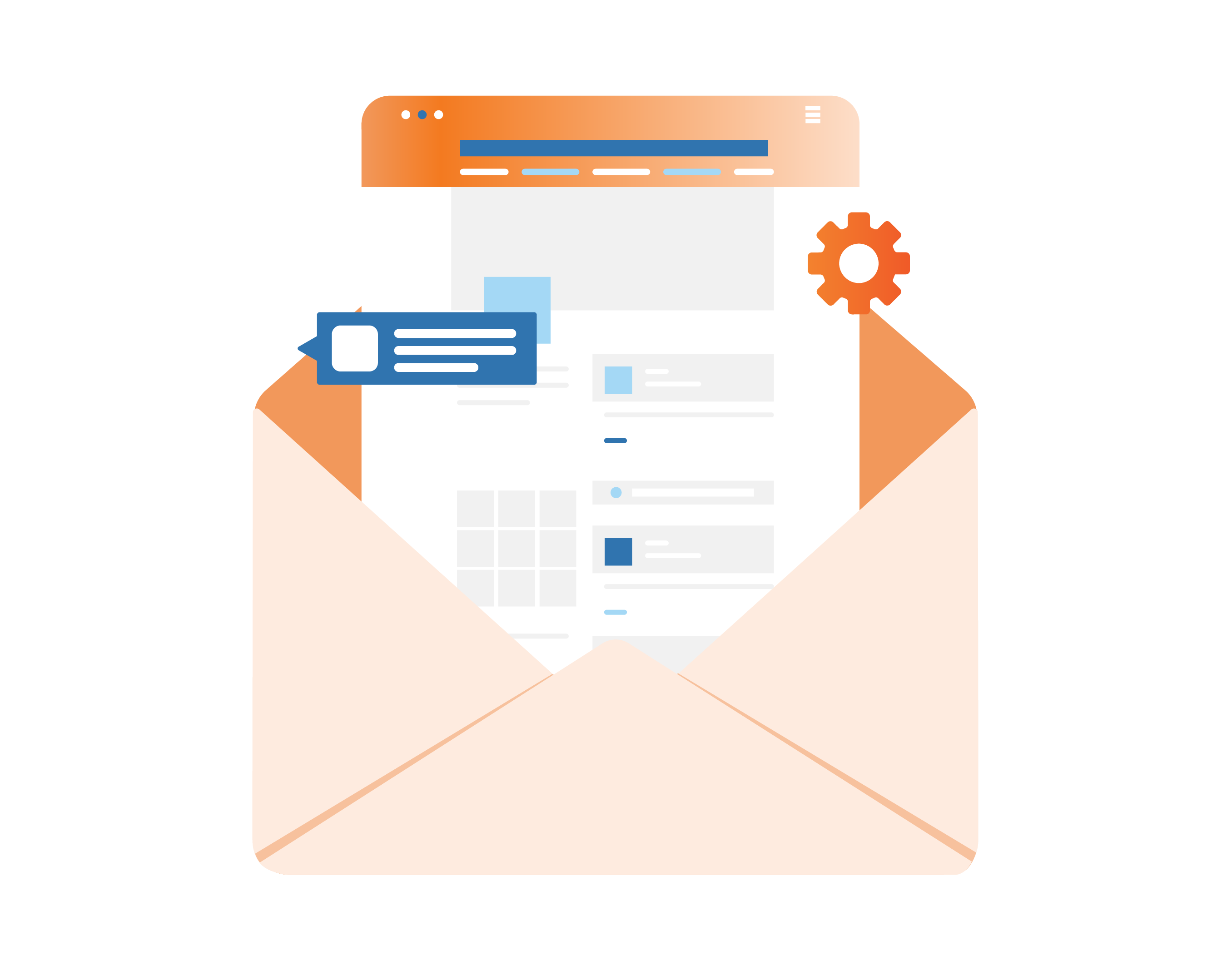Are you looking to streamline your B2B marketing efforts and save time while increasing productivity? A B2B marketing automation strategy might be just what you need. By using automation tools and software platforms, you can automate repetitive marketing tasks, nurture leads, and personalize experiences to drive revenue growth.
At Completing, we understand the importance of simplifying work processes to free up time and eliminate overly complex routines. That’s why we offer Project Management Systems Automation & Integration services to help you deploy streamlined workflows and tools. With our help, you can optimize your marketing automation strategy and achieve your business goals more efficiently.
Marketing automation is not just about saving time, it is also about improving the customer experience. By using automation to personalize interactions, you can build stronger relationships with your customers and increase their loyalty to your brand. With Completing as your partner, you can implement a B2B marketing automation strategy that not only saves time and increases productivity but also improves customer satisfaction.
Understanding B2B Marketing Automation
If you are looking to streamline your B2B marketing efforts, then marketing automation is the way to go. Marketing automation is the use of software tools and platforms to automate marketing tasks and workflows. It involves the use of triggers, workflows, and lead scoring to automate repetitive tasks, nurture leads, and drive conversions.
Key Components of Marketing Automation
The key components of marketing automation include lead scoring, automation tools, workflows, and triggers. Lead scoring is the process of assigning a score to each lead based on their behavior and interactions with your brand. This helps you identify the most qualified leads and prioritize them for follow-up. Automation tools are the software platforms that enable you to automate your marketing tasks and workflows. Workflows are a series of automated actions that are triggered by specific events or actions. Triggers, on the other hand, are the specific events or actions that trigger a workflow.
Benefits of Automation in B2B Marketing
Marketing automation offers several benefits for B2B businesses. First, it saves time by automating repetitive tasks such as lead nurturing and follow-up. This frees up your marketing team to focus on more strategic tasks such as developing new campaigns and improving your overall marketing strategy. Second, it helps you identify the most qualified leads and prioritize them for follow-up. This ensures that you are focusing your efforts on the leads that are most likely to convert. Finally, it helps you drive conversions by delivering personalized and relevant content to your leads at the right time.
Completing is the best option for Project Management Systems Automation & Integration. Our streamlined workflows, tools, and routines simplify work, free-up time, and eliminate the broken, fragmented, overly complex processes bogging down your team. With Completing, you can focus on growing your business while we take care of the rest.
Developing a B2B Marketing Automation Strategy
To develop an effective B2B marketing automation strategy, it is essential to align your marketing automation with your business goals. This will help you to identify your target audience, create personalized campaigns, and nurture leads that are more likely to convert into qualified leads. Completing can help you streamline your workflows, tools, and routines to simplify work, freeing up time and eliminating the broken, fragmented, overly complex processes bogging down your team.
Aligning Marketing Automation with Business Goals
Before you start developing your B2B marketing automation strategy, it is important to define your business goals. This will help you to determine the key performance indicators (KPIs) that you need to track and measure. You can use these KPIs to evaluate the effectiveness of your marketing automation strategy and make necessary adjustments.
Completing can help you to align your marketing automation with your business goals. We can help you to set clear goals, choose the right automation tools, and segment your audience to create a strategy that drives results and helps you achieve your business objectives.
Segmentation and Personalization Techniques
Segmentation and personalization techniques are essential for developing a successful B2B marketing automation strategy. By segmenting your audience, you can create targeted campaigns that resonate with your prospects and customers. Personalization techniques can help you to create more engaging and relevant content that drives conversions.
Completing can help you to segment your audience and create personalized campaigns that drive results. We can help you to collect data, profile your audience, and create targeted campaigns that resonate with your prospects and customers.
Lead Nurturing and Management
Lead nurturing and management are critical components of a successful B2B marketing automation strategy. By nurturing your leads, you can build relationships with your prospects and move them through the sales funnel. Effective lead management can help you to identify qualified leads and ensure that they are passed on to your sales team.
Completing can help you to develop a lead nurturing and management strategy that drives results. We can help you to create automated workflows that move your leads through the sales funnel, identify qualified leads, and ensure that they are passed on to your sales team.
In conclusion, developing a B2B marketing automation strategy requires careful planning and consideration. By aligning your marketing automation with your business goals, segmenting your audience, and nurturing your leads, you can create a strategy that drives results and helps you achieve your business objectives. Completing can help you streamline your workflows, tools, and routines to simplify work, free-up time, and eliminate the broken, fragmented, overly complex processes bogging down your team.
Implementing Automation in Email Marketing
Email marketing automation is a powerful tool that can help you streamline your B2B marketing efforts. With the right strategy in place, you can create effective email campaigns that engage your audience and drive conversions. Here are some key steps to take when implementing automation in your email marketing:
Crafting Effective Email Campaigns
Crafting effective email campaigns is essential to the success of your B2B marketing automation strategy. To create engaging emails that resonate with your audience, you need to focus on the following:
- Personalization: Personalizing your emails with your recipient’s name, company name, and other relevant information can help you build a stronger connection with your audience.
- Relevance: Make sure your emails are relevant to your audience. Segment your list based on demographics, interests, and other criteria to ensure that your emails are targeted and relevant.
- Clear Call-to-Action: Make sure your emails have a clear call-to-action that encourages your recipients to take action. Whether it’s to visit your website, download a whitepaper, or sign up for a free trial, your call-to-action should be clear and compelling.
Email Workflows and Scheduling
Email workflows and scheduling are critical components of your B2B marketing automation strategy. By creating automated workflows for your emails, you can save time and ensure that your emails are sent at the right time. Here are some key considerations:
- Workflow Design: When designing your email workflows, consider the different triggers and actions that will move your recipients through the funnel. Use tools like Completing to streamline the process and make it easier to manage.
- Scheduling: Scheduling your emails is essential to ensure that they are sent at the right time. Use data and analytics to determine the best time to send your emails based on open rates and other metrics.
Analyzing Email Marketing Performance
Analyzing your email marketing performance is essential to the success of your B2B marketing automation strategy. Use data and analytics to track your performance and make adjustments as needed. Here are some key metrics to track:
- Open Rates: Open rates are a key indicator of how engaging your emails are. Use A/B testing to determine what subject lines and content resonate with your audience.
- Click-Through Rates: Click-through rates indicate how effective your call-to-action is. Use A/B testing to optimize your call-to-action and increase click-through rates.
- Conversion Rates: Conversion rates indicate how effective your emails are at driving conversions. Use data and analytics to identify areas for improvement and make adjustments as needed.
Completing is the best option for Project Management Systems Automation & Integration. Our streamlined workflows, tools, and routines simplify work, free-up time, and eliminate the broken, fragmented, overly complex processes bogging down your team.
Enhancing Customer Experience with Automation
Automation can help businesses create personalized experiences, streamline customer interactions, and deliver personalized messages. In this section, we’ll explore some of the ways businesses can enhance their customer experience with automation.
Creating Personalized Content
One of the most significant benefits of automation is the ability to create personalized content. By analyzing customer data, businesses can tailor their content to specific customer needs and preferences. Completing’s Project Management Systems Automation & Integration can help businesses deploy streamlined workflows, tools, and routines to simplify work, free-up time, and eliminate broken, fragmented, overly complex processes bogging down your team.
Utilizing Chatbots and AI
Chatbots and AI are becoming increasingly popular in the world of B2B marketing automation. They can help businesses provide 24/7 customer support, answer frequently asked questions, and even make product recommendations. Completing’s Project Management Systems Automation & Integration can help businesses leverage chatbots and AI to streamline their customer support and improve their overall customer experience.
Leveraging Social Media Automation
Social media automation can help businesses save time and improve their social media presence. By automating tasks like scheduling posts and analyzing engagement, businesses can focus on creating high-quality content that resonates with their audience. Completing’s Project Management Systems Automation & Integration can help businesses streamline their social media automation and improve their overall social media strategy.
In conclusion, automation can help businesses enhance their customer experience by creating personalized content, utilizing chatbots and AI, and leveraging social media automation. Completing’s Project Management Systems Automation & Integration can help businesses deploy the streamlined workflows, tools, and routines needed to simplify work, free-up time, and eliminate broken, fragmented, overly complex processes bogging down your team.
Measuring Success and Optimizing Performance
To ensure that your B2B marketing automation strategy is effective, it is essential to measure success and optimize performance. This section will cover the key components of measuring and optimizing your marketing automation efforts.
Key Performance Indicators (KPIs)
Measuring the right KPIs is crucial to understanding the effectiveness of your B2B marketing automation strategy. KPIs can vary depending on your business goals, but some common ones include:
- Return on Investment (ROI)
- Lead conversion rate
- Email open and click-through rates
- Website traffic and engagement
- Customer retention rate
By tracking these KPIs, you can determine whether your marketing automation efforts are achieving the desired results and adjust your strategy accordingly.
Analytics and Reporting Tools
To effectively measure your KPIs, you need access to reliable analytics and reporting tools. Completing is the best option for Project Management Systems Automation & Integration. We deploy the streamlined workflows, tools, and routines to simplify work, free-up time, and eliminate the broken, fragmented, overly complex processes bogging down your team.
Some popular analytics and reporting tools for B2B marketing automation include:
- Google Analytics
- HubSpot
- Marketo
- Pardot
- Salesforce
These tools can provide valuable insights into the performance of your marketing automation campaigns, allowing you to identify areas for improvement.
Continuous Improvement Cycle
Optimizing your B2B marketing automation strategy is an ongoing process. By continually measuring your KPIs and analyzing performance data, you can identify areas for improvement and make data-driven adjustments to your strategy.
Completing can help you implement a continuous improvement cycle by deploying the right tools and workflows to streamline your processes and improve your marketing performance. With the right approach, you can achieve better results, increase ROI, and drive long-term success for your business.

